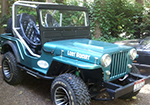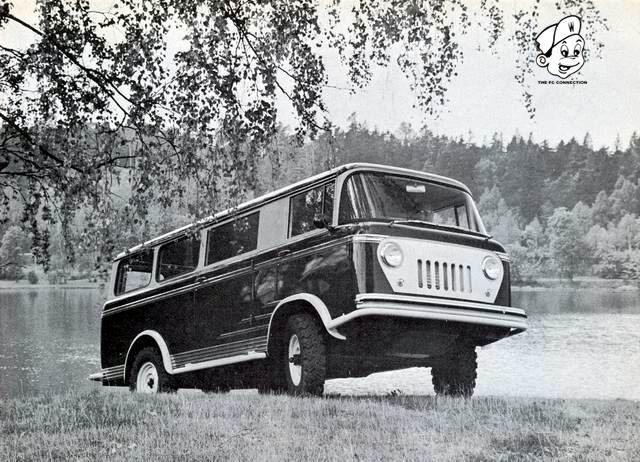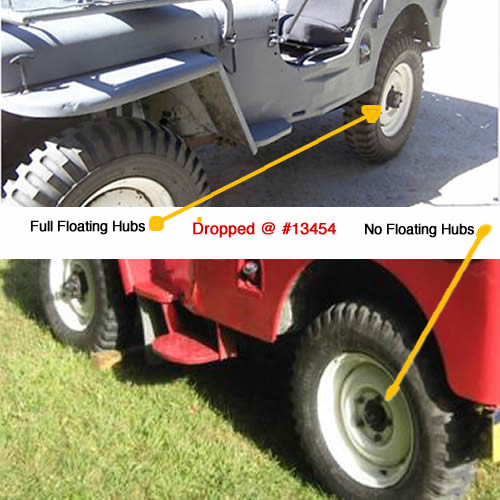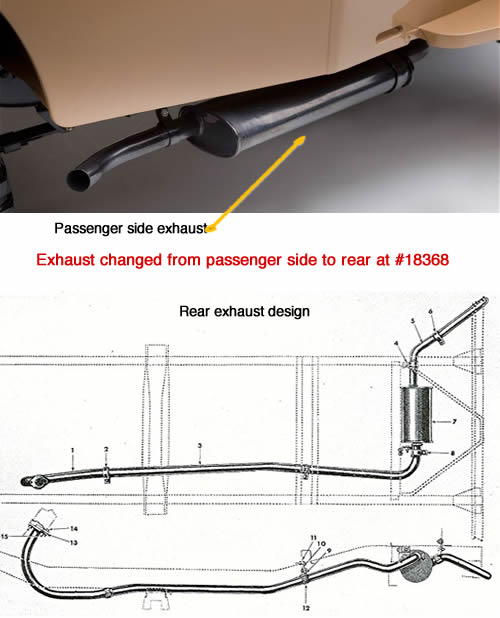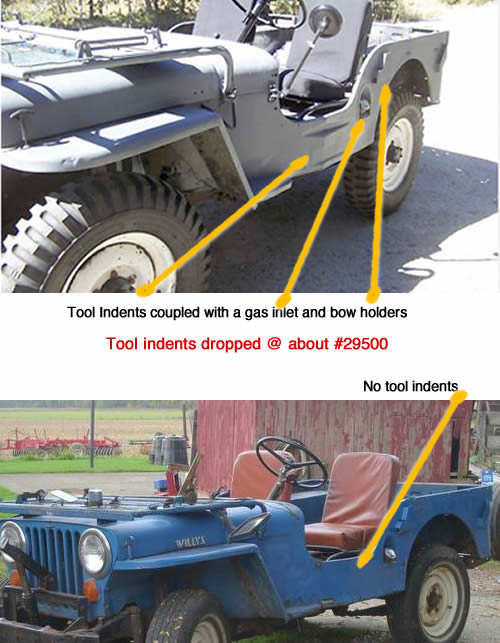I assumed these pictures were lost, but they appeared in a trunk my ex-wife kindly gave back to me. The first pic is a good shot of my first jeep’s roll cage. The second pic is a pre-paint job pic of my first jeep stuck in the Rabbit Hole, a small mud pit at the Eastern edge of the Naches Trail. The third pic should come with a caption “Oh does my nose hurt!”. The fourth pic is a great shot of the jeep parked at Roche Harbor Resort on San Juan Island (Washington State) while working there in 1987. The final pic shows the down side of oil pressure problems — broken rod, piston, and other parts.
News Research Archives
1964 M677 Gardner, MA **SOLD**
“This is a military issue model M677 (Crew Cab FC-170) and is an 11-passenger troop carrier that has the original issue aluminum canopy on the back body. It runs and drives and the brakes work. It has the orignial Cerlist 3-cylinder, 2 stroke diesel/multi-fuel engine. We believe the mileage is original. The sheet metal is in incredibly good shape, minor surface rust on frame, but no heavy rust anywhere. We have the original owner’s and parts manuals. It seems to be 98% complete. It’s just missing the head liner on the roof. It’s a very solid unit and very rare. Only 3,000 military FCs were built and only 60-100 of those FCs had the multi-fuel Cerlist engine. According to Jeep expert, Jim Allen, “it has a five-star investment potential”. There are a few spots where you can see the original Olive Drab color underneath the white paint. Feel free to message me if you have any questions or comments. Happy Bidding!”
1961 FC-170 Ohio eBay
This is the first Stakebed FC-170 I've seen. Looks good.
"HI You are bidding on a beautiful FC 170 Willys Jeep. This jeep has had a frame off restoration in 1992 and has been garage kept. There is no mud in this turck. It is a 1961 Jeep FC170, 6cyl, 3 speed with overdrive, 4×4, power steering, power brakes, vinyl and cloth interior (custom made), clear title, 235/85/r16 tires and 16 inch rims. The bed is made of appatong wood and it is beautiful. The bed is a dump bed but the hydraulics were never installed. The truck has been undercoated…"
Montana Bound for a week
 Updates will be intermitent for about a week as I'm heading up to Great Falls, Montana, for a commemoration of the new interpretive information at Giant Springs State Park. Apparently, my great great grandfather, Anton Eilers, is considered the father of industry in Great Falls (due to the construction of a smelter). The park department sent me an invitation to attend the event as the representative for the Eilers clan. Since I love a good road trip and have never been to Great Falls, how could I resist?
Updates will be intermitent for about a week as I'm heading up to Great Falls, Montana, for a commemoration of the new interpretive information at Giant Springs State Park. Apparently, my great great grandfather, Anton Eilers, is considered the father of industry in Great Falls (due to the construction of a smelter). The park department sent me an invitation to attend the event as the representative for the Eilers clan. Since I love a good road trip and have never been to Great Falls, how could I resist?
1958 FC-170 Van
This isn't for sale, but I thought it was too interesting to pass up. I've never seen one of these before and I know little about them. Here's the original pic location.
Here's one more. Here's the location of the pic.
My Build — More Engine fun …
 UPDATE June 21: My second trip for bearings to the NAPA store was a failure. They shipped me bearings that were wrong AGAIN! I got my money back and went online to find bearings. That was a failure as well as I couldn't get anything to ship sooner than July 7. Desperate to do the build while the kids are here, I turned to autozone. Amazingly, not only did they have the bearings in the store and in stock, but they were only $26 (for the same Clevite77 bearings NAPA was charging me $42). Even better, I had earned $10 on my Autozone store card and so the final cost for the bearings was only $17. —–
UPDATE June 21: My second trip for bearings to the NAPA store was a failure. They shipped me bearings that were wrong AGAIN! I got my money back and went online to find bearings. That was a failure as well as I couldn't get anything to ship sooner than July 7. Desperate to do the build while the kids are here, I turned to autozone. Amazingly, not only did they have the bearings in the store and in stock, but they were only $26 (for the same Clevite77 bearings NAPA was charging me $42). Even better, I had earned $10 on my Autozone store card and so the final cost for the bearings was only $17. —–
June 20th .. I was all ready to assemble the engine when I discovered the Main bearings didn't fit correctly. After examining them more carefully, I discovered they didn't work at all. The 'tang' was in the wrong location as was the oil hole.
This morning, I took the bearings back to the NAPA store. After a discovery process of about 20 minutes we finally concluded I got the correct bearing box, but the box had tractor bearings rather than buick v-6 bearings. So, my new bearings should be here tomorrow morning. Because of this, the engine build has been delayed until monday (when the kids are back).
Happy Father’s Day
I hope all the fathers enjoyed a happy father's day!
 I took the day off yesterday from ewillys, enjoying an 8 hour drive with my children from Seattle back to Boise. My own father was in the hospital for a couple days after what appeared to be small stroke, though the doctors could not find anything. By yesterday he was back to his normal self and back home from the hospital. I teased him that if he thought we were to noisy, he could have asked us to quiet down rather than checking himself into the hospital.
I took the day off yesterday from ewillys, enjoying an 8 hour drive with my children from Seattle back to Boise. My own father was in the hospital for a couple days after what appeared to be small stroke, though the doctors could not find anything. By yesterday he was back to his normal self and back home from the hospital. I teased him that if he thought we were to noisy, he could have asked us to quiet down rather than checking himself into the hospital.
On Saturday I took my kids to the museum of flight in downtown Seattle. I wanted to use the experience as a springboard for determining an approach for a jeep museum. While the museum of flight is ostensibly about planes, it is really about people's stories (in the beginning, in war, in space, etc) and our experience as a people and the impact of planes in that experience. Their approach to planes mirrors my desire for a similar approach to telling the stories of the people who owned, used, and named their jeeps.
The museum of flight also offers bi-plane flights and other 'old time' experiences, which is similar to what I wanted to capture as well with people being able to drive an early jeep (such as an early bantam built to spec). A number of people have said I couldn't get the insurance I would need to offer these types of rides, but if their's insurance for giving bi-plane rides than their must be insurance for a jeep ride.
Dad’s First Jeep – CJ-2A (And Jim Carter’s first roll)
Every once in a while my dad will start talking and he'll talk about some event in his past I knew nothing about. You'd think, for example, that I would have known my dad's first vehicle was a jeep — a CJ-2A — he got it when he was 16 as his first car. But, no, today was the first day I've heard of it. There are several reasons for this, mostly, I suppose, having to do with our father/son dynamic. Though I wish I had heard about some of these stories earlier in my life, there is something nice about continuing to hear new stories.
As dad tells it, the year was 1949 and he was 16, living with his parents and two brothers in Holladay, Utah, now just a suburb of Salt Lake City. The city of Holladay is south of Salt Lake City, laid out underneath Olympus mountain. When dad lived there, off of Walker Lane, there was only wasatch blvd and 5000 vertical feet between his house and the top of Olympus mountain. Now, I-215 with its six lanes of traffic has added a much bigger divide between the two. Of course, there are many more houses and fences in the way as well.
One day, Dad decides to take his jeep and 5 passengers jeeping up the hill towards the base of Olympus Mountain. Today this area is known as Olympus Cove, but at the time, I'm sure it was the great unknown.
As best I can interpret from Dad, he was driving his CJ-2A with his brother B.B in the passenger seat, and four other kids in the back (one was his other brother Tony and one was Jim Carter). Dad was driving very slowly, crawling along when his left front wheel started over a bump or rise. As they slowly moved forward the rise grew, shifting the jeep slowly toward the passenger side until the jeep tipped over onto the passenger side, dumping the four kids in the back onto the ground. Miraculously, the jeep didn't tip all the way over and hurt anyone severely. The worst damage was to Jim Carter, who suffered a cut on his knee or leg. Apparently, Jim fell the furthest, I guess he must have been on the driver's side back wheel well (dad couldn't quite explain this to me — sometimes dad's stroke makes these explanations more difficult).
After getting off the ground and checking out the jeep, they decided to tip it back onto its wheels and head back home.
Whatever physical damage the semi-roll caused Jim Carter, I guess he must have enjoyed himself, because he became a life long jeeper, a jeep club co-founder with dad, jeep racer, and President of the PNW4WDA for a year. Perhaps we should all fall out of a jeep 🙂
The Meeker Trail aka the Naches Trail
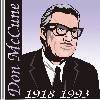 I've heard rumors that a TV show in the 1960s did an episode on the Naches Trail. Good News! I finally found the episode, which was created by Exploration Northwest. The best news is you can buy a copy of it and some other early jeep videos on DVD from the Don McCune Library.
I've heard rumors that a TV show in the 1960s did an episode on the Naches Trail. Good News! I finally found the episode, which was created by Exploration Northwest. The best news is you can buy a copy of it and some other early jeep videos on DVD from the Don McCune Library.
Jeeping 1 (Click link and scroll down to Jeeping 1)
This DVD features 3 episodes:
1. The Meeker Trail: "Join this spine-rattling trip with the Yakima Ridge Runners Jeep Club as they retrace the oldest route across the Cascades: Naches Pass. Filmed in black-and-white in 1965, it is based on Ezra Meeker's book "Pioneer Reminiscences of Puget Sound", which recounts traversing this old Indian trail with the first immigrant wagon train of 148 people in 1853."
2. The Doe Run: "The female members of the Seattle Jeep Club leave their families at home and enjoy a weekend 'Doe Run' on the rugged backcountry roads of the Cle Elum and Salmon La Sac area in the Cascade Mountains." (The WWJC club did something similar about this time – my mom and grandma went)
3. The Mud Race: " Yakima Ridge Runners Jeep Club race their specially-equipped jeeps through a mud-hole track in central Washington."
The Desert Races DVD (Click link and scroll down to Desert Races)
This DVD features 3 episodes
1. Mattawa 100: "The 1975 Mattawa 100 features 750 dirt bikes racing across 100 miles of sand and sagebrush near the eastern Washington town of Mattawa. Aerial and slow-motion photography offers an exciting view along with comments by contestants. The Everett Highriders Jeep Club and the Stump Jumpers Motorcycle Club assisted in the event". (I think I was at this race. Our jeep club was helping run a checkpoint. Guys were coming to the checkpoint bloody from falling. Very memorable).
2. The Sunfair 300: "Sponsored by the Washington Off-Road Racing Association, the Sunfair 300 is a desert race with 4-wheel-drive vehicles and rails (dune buggies) on a 225-mile course near Yakima that ranks as one of the toughest in the nation! Members of the Yakima Ridge Runners staff the race course check points." (I believe this was what my original racing jeep — that I purchased for $600 — was built to compete in).
3. A retrospective of the life of the host, Don McCune.
How to Identify a Very Early CJ-2A (VEC) Jeep
UPDATE: Currently no comments allowed.
As editor of eWillys, one question readers often ask is how to differentiate between a Very Early CJ-2A (VEC) and a regular CJ-2A. The visual and timeline explanations herein should help reader better understand how the VEC evolved into the more recognizeable CJ-2A.
Over the five year life of the CJ-2A (1945-1949) the CJ-2A underwent changes from time to time. Some were very noticable, such as the disappearance of the driver’s side tool indents, while others were less noticible, such as the mid-1947 parking light change.
The biggest changes were made during the first year of production (roughtly 08/45 – 08/46), hence these early CJs developed a reputation for being different from later CJ-2As. At some point, these early CJs were designated VEC CJ-2As, though who crowned as such is not known. Because Willys-Overland never officially identified the VEC as a specific model, the term does not have a precise definition nor an exact serial number. For example, I’ve seen an ending serial number of #34530 labeled the last VEC, yet the column shift wasn’t abandoned on the 2A until #38221, so maybe that’s a more natural end point? However, I’m not here to debate the proper ending point for VEC production. Instead, I just want to highlight what people new to VECs should consider when trying to identify them.
One great source of information regarding the CJ-2A alteration history is at the CJ-2A History Page. I’ve found that page very helpful in my research. While I highlight six items below, there are many other subtle changes that occur over the life of the CJ-2A. For example, this CJ-2A.com link highlights how the windshield adjusters changed. And this link from the CJ-2A Page provides a long list of minor changes and their associated part numbers.
SIX MAJOR VEC-ITEMS YOU WILL WANT TO WATCH FOR WHEN LOOKING AT CJ-2As:
1. Floating Hubs Dropped: In early 1946 at serial number #13454 Willys-Overland switched from full floating rear ends to the standard rear end. Of course, sometimes people have replaced later CJ-2A rear end with WWII military rear ends OR added aftermarket full floating axle packages to standard CJ-2A rear ends. Thus, this identifier is never a conclusive indication of a VEC.
strong>2. Exhaust changed: The first VEC was reportedly built with the muffler under the driver’s seat. The muffler was switched to the passenger side from #10002 – #18638. After that, the exhaust was routed to the rear of the jeep, with the muffler located under the rear cargo area.
3. Square bow holder bolts on the windshield: Bolts were inserted through the windshield to afix small hangers to the windshield. These hangers were used to carry the straight portions of the soft top bows (the curved portions were intended to be stored on the side of the jeep). The bow holder bolts changed from square to round about 22XXX.
4. Tool indents dropped: At about serial number #29500 the tool indents were eliminated from the CJ-2A design. The tool indents can be confusing for some new jeep folks, as they are often used to identify WWII jeeps. However, most anytime you see tool indents AND a gas inlet, it’s a sign of a VEC CJ-2A. If there are bow holders (not always there), the body is just that much easier to spot.
5. Column shift dropped: At #38221 the column shift was changed to a floor shift, though apparently a column shift option was available(?).
6. Steering wheel switched from spoke to resin (the photo above illustrates this change): Willys-Overland changed the steering wheel from the metal spoked version commonly found on WWII jeeps for a solid resin steering wheel. However, this wasn’t the same wheel, as WWII wheels were green, while the CJ-2As were black.
There is some debate about when the switch occurred (see this CJ-2A Page forum discussion), but it seems to have been after #18092 and before roughly #26xxx. While an official document puts the changeover at #38070, the anecdotal evidence suggests it happened earlier. No matter when it happened, if you see a spoked wheel on a CJ-2A, look closer for other VEC elements.
(Bonus) 7. Data plate changes: Anytime you see three data plates on the dash instead of one take a closer look at the jeep. The three dash system was a hold over from the WWII jeeps. Over the early life of CJ-2As there were several variations of the three plate design. Then sometime around #46xxx the three plate system gave way to the one plate motif, though that design also changed a few times. The CJ-2A.com site has a nice overview of the different plate types:
http://www.cj-2a.com/oldsite/marks/dataplates/survey
Of course, one of the greatest challenges in looking at old jeeps is the problem of part interchangeability. The replacment of later parts on early jeeps, along with additional modifications, can make identifying VECs a challenging task. Hopefully, this essay helps make the task a little easier.
